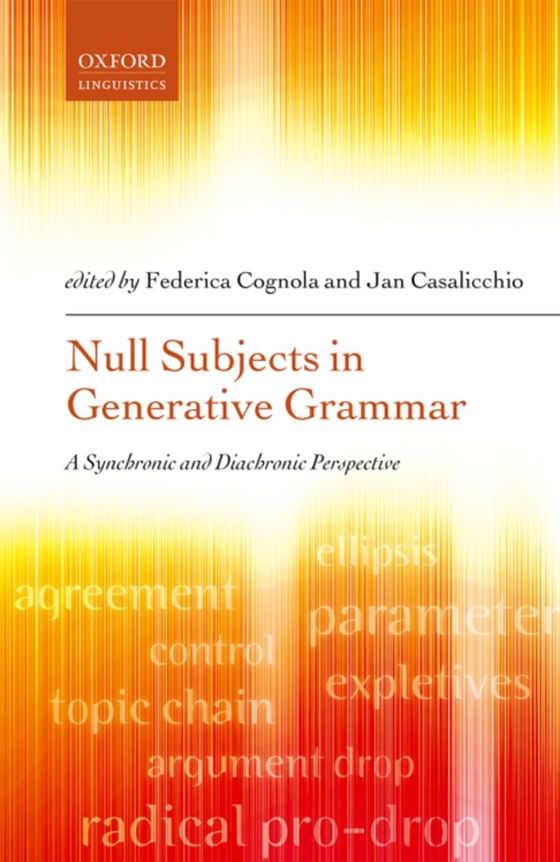
Null Subjects in Generative Grammar e-bog
1021,49 DKK
(inkl. moms 1276,86 DKK)
This book considers the null-subject phenomenon, whereby some languages lack an overtly realized referential subject in specific contexts. In generative syntax-the approach adopted in this volume-the phenomenon has traditionally been explained in terms of a 'pro-drop' parameter with associated cluster properties; more recently, however, it has become clear that pro-drop phenomena do not always ...
E-bog
1021,49 DKK
Forlag
OUP Oxford
Udgivet
19 april 2018
Længde
336 sider
Genrer
Historical and comparative linguistics
Sprog
English
Format
pdf
Beskyttelse
LCP
ISBN
9780192547880
This book considers the null-subject phenomenon, whereby some languages lack an overtly realized referential subject in specific contexts. In generative syntax-the approach adopted in this volume-the phenomenon has traditionally been explained in terms of a 'pro-drop' parameter with associated cluster properties; more recently, however, it has become clear that pro-drop phenomena do not always correlate with all the initially predicted cluster properties. This volume returns to the centre of the debate surrounding the empirical phenomena associated with null subjects. Experts in the field explore the cluster properties associated with pro-drop; the types of null category involved in null-subject phenomena and their identification; and the typology of null-subject languages, with a special focus on partial null-subject languages. Chapters include both novel empirical data and new theoretical analyses covering the major approaches to null subjectsin generative grammar. A wide range of languages are examined, ranging from the most commonly studied in research into null subjects, such as Finnish and Italian, to lesser-studied languages such as Vietnamese and Polish, minority languages such as Cimbrian and Kashubian, and historical varietiessuch as Old French and Old High German. The research presented also contributes to the understanding of other key syntactic phenomena, such as the nature of control, the role of information structure and semantics in syntax, the mechanisms of language change, and the formalization of language variation. The breadth and depth of the volume will make it a valuable resource not only for generative syntacticians, but also for all those working in the fields of historical linguistics, typology, comparative grammar, semantics, and theoretical and descriptive linguistics more generally.
 Dansk
Dansk

